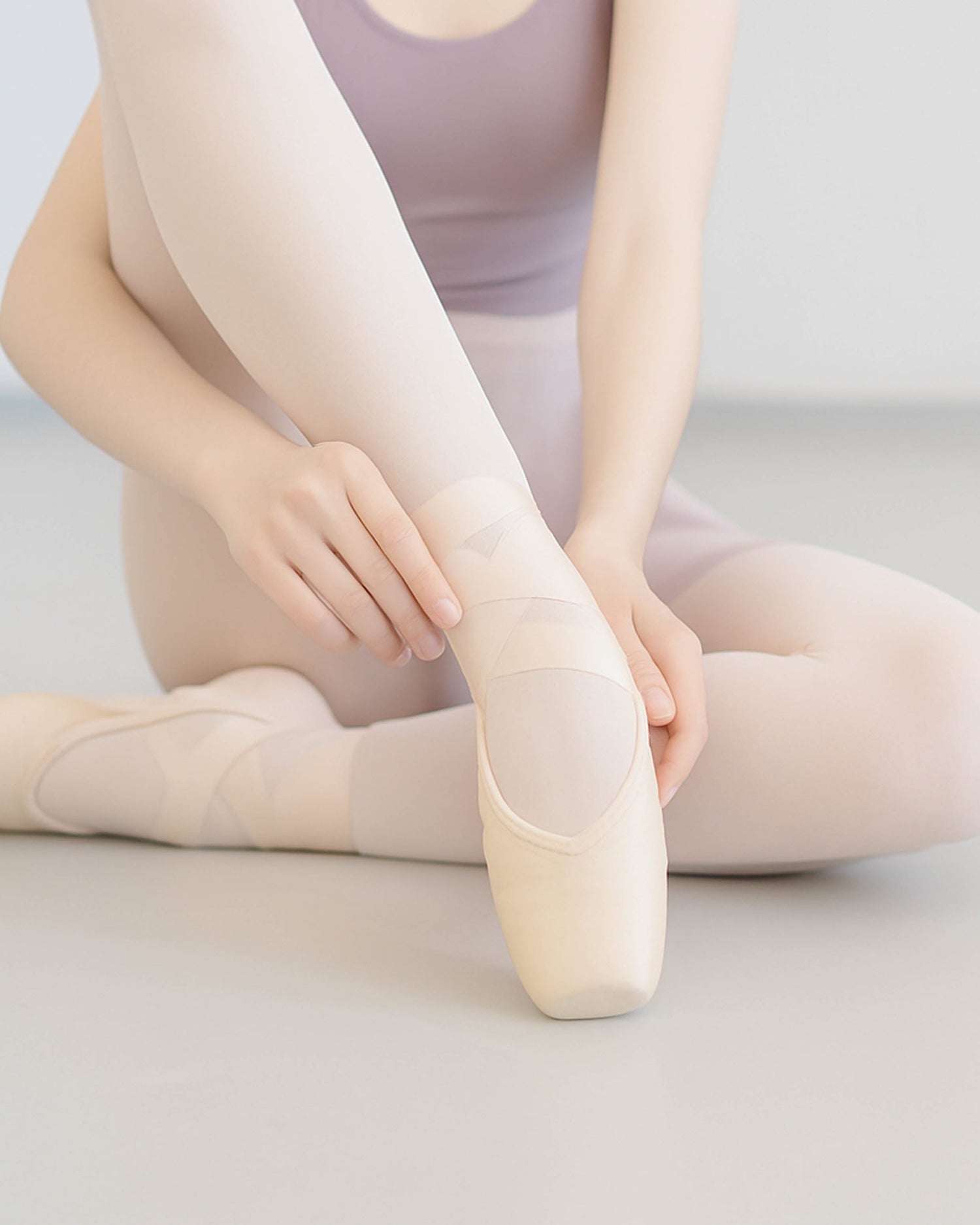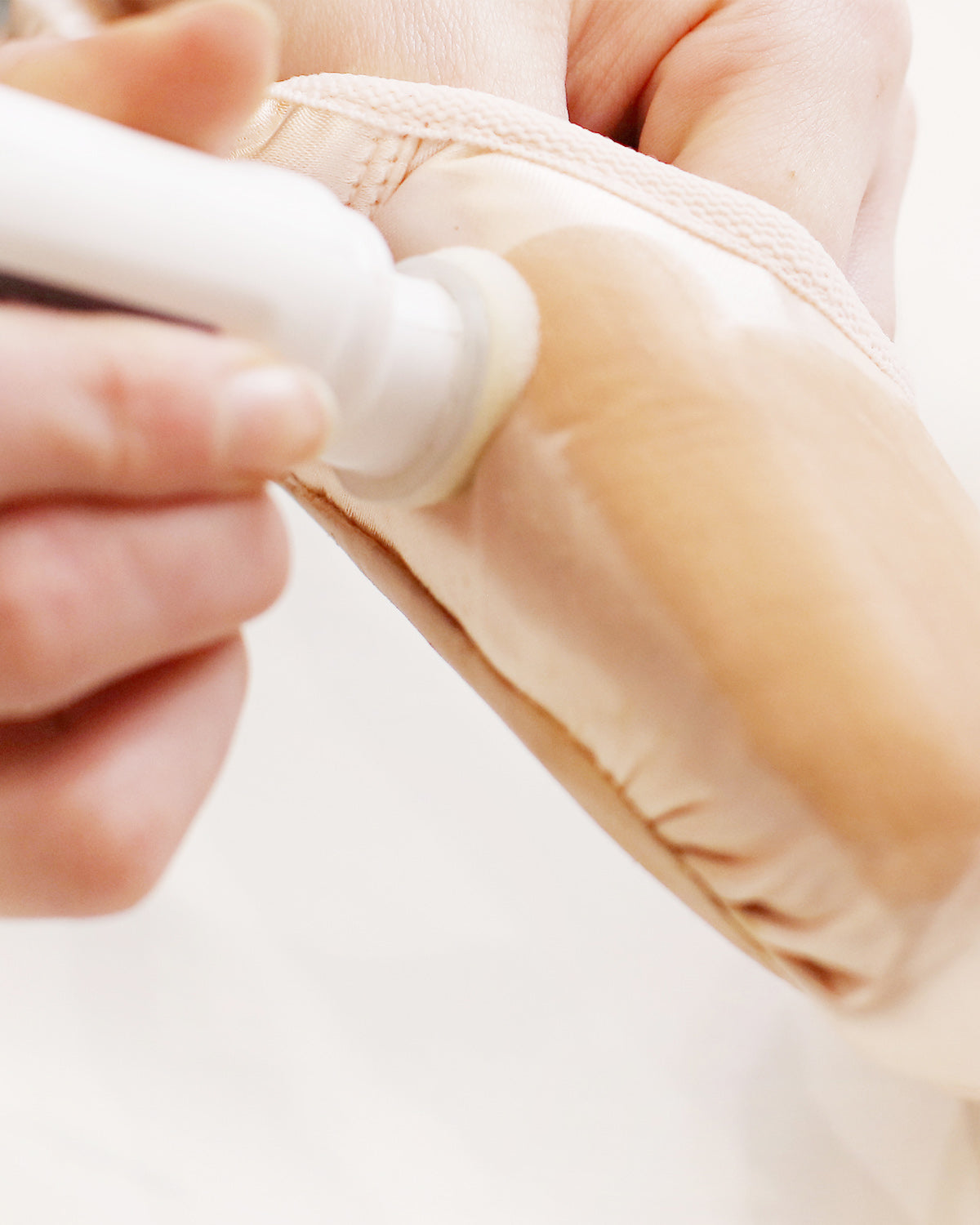Are you hoping to be moving on to pointe work soon and need to build up some strength? Have you just recently got your first pair of pointe shoes but still feel a bit wobbly? Never fear, there are some super simple pre-pointe exercises you can do for strengthening your ankles and increase the range of mobility you’ll need to dance on pointe. You might be surprised at how easy they really are!
1. Rises: complete foot articulation
Don’t tell me…you know how to rise. But do you do it correctly? Every time? Really?
Stand in parallel facing the bare (or the back of a chair if you’re at home). Slowly rise, with resistance, from flat feet through ¾ pointe to full pointe (or to demi-pointe if wearing soft shoes). Don’t allow your ankles to wibble-wobble out of alignment. Pull your legs up completely, hold for a few seconds and then slowly, slowly roll back down to flat feet. Make sure you roll through ¾ and demi-pointe, allowing complete articulation of the foot. Repeat 10 times.
Once you have mastered the perfect rise, do it on one foot…five times slowly and correctly. Plié to stretch out the calves and then do five on the other foot. Correct and complete articulation of the foot is one of the cornerstones of pointe work. Forming the habit of doing this correctly from the start is vital on your pointe-work journey. Pre-pointe rising exercises are brilliant for ankle strengthening and stretching.
2. Balance: the cornerstone of pointe work

Pointe work relies on your balance. When you wear pointe shoes you have to balance on the platform of the shoe only. If you haven’t seen one, the platform of a pointe shoe is roughly 4cm in diameter. That’s not a huge space to balance a person on. Improving your balance comes from strengthening your ankles and can also improve your proprioception. Proprioception is the sense of where your body and limbs are in space.
When working on balance, start with something easy and work your way up to something more challenging. Make sure to do everything on both legs. We all have a dominant stronger side but you need equally strong balance for pointe work.
Stand on one leg with your hands on your hips and raise your second leg to retiré. Stay there for 1 minute. Repeat on the other leg. Want to make it harder? Try these suggestions.
Extend the time you stand for to 2 minutes each leg. Move your arms through the 5 arm positions. Try doing it with your eyes closed. Rise to relevé.
3. Tendus: Foot articulation, ankle mobility and strengthening
Yep. You heard me…tendus. Boring but effective. This is another simple exercise that if repeated CORRECTLY will strengthen and increase the range of mobility in your ankles necessary for pointe work.
Stand in first position facing the barre. Push one foot out to the side working through demi and ¾ pointe to a fully pointed foot. Don’t scrunch your toes, keep the foot as long as possible. Lift the foot off the floor for a few seconds to ensure you have your weight correctly placed. Bring the foot back into first position slowly and with resistance, ensuring to correctly articulate the foot once again. Repeat 10 times on each foot.
4. Tendu through a resistance band: Ankle strength and mobility



Strength, stability and control in the ankles is another cornerstone of pointe work. You’ll need a resistance band for these ankle strengthening exercises.
- Sit up straight on the floor with your legs and feet stretched out in front of you. Put the resistance band around the ball of your foot and grab both ends of the band. Flex your ankle all the way up towards you while keeping your toes relaxed.
- Slowly stretch your ankle downwards, against the band, until your foot is pointed. Remember to keep toes elongated and do not scrunch them.
- Repeat 10 times and then 10 times on the other foot.
5. Doming: Strengthen your intrinsic foot muscles.

This pre-pointe exercise is going to give you nice strong feet and should reduce cramping in the toes and arches.
- Sit on a chair and place your feet flat on the ground in parallel.
- Raise your metatarsals off the ground and pull your toes in towards the centre of your foot to create a dome shape. Remember not to allow the toes to scrunch!
- Then slide your toes back to flat.
- If this is a little tough at first don’t worry; this is a tough pre pointe exercise. Try using your hands to help you out a bit until your toes can do it alone.
6. Piano Toes: Intrinsic muscles
This is another toughie but will pay off in the long run. This requires brainpower as well as super-strong intrinsic foot muscles.
With feet flat on the ground in parallel, try raising only your big toe off the ground. Then try only the second, then only the third and so on.
--------------------------------------------
Looking for more pre pointe exercises for ankle strengthening and conditioning? Ask your teacher or physio for some suggestions. If you think you are ready to start pointe work ask your teacher for their opinion. Our pointe shoe fitters can carry out pre-pointe preparedness assessments in stores but we like to have a teacher’s go-ahead before we fit you. Dancing on pointe before you have the necessary mobility and ankle strength can be really dangerous and we want to encourage a generation of happy and healthy dancers. Best of luck in your pre pointe exercises and we look forward to seeing you at your first pointe shoe fitting! Book an appointment here.










